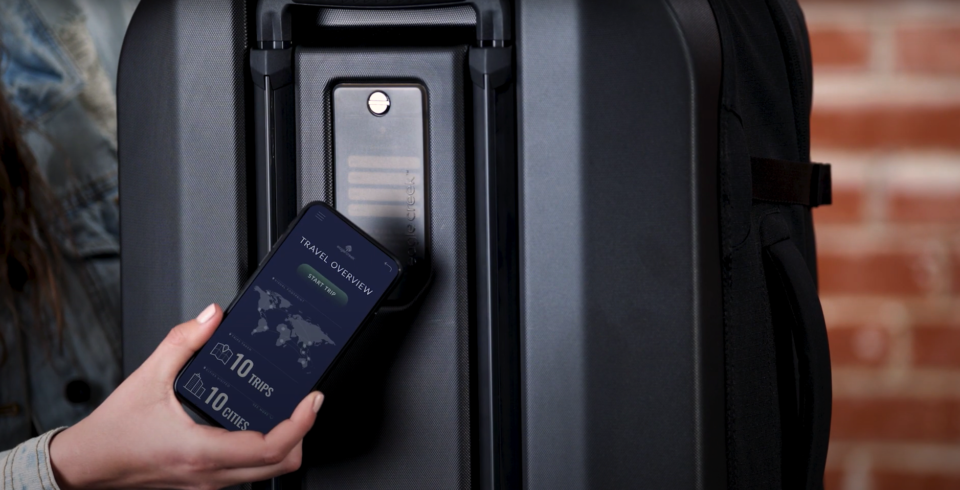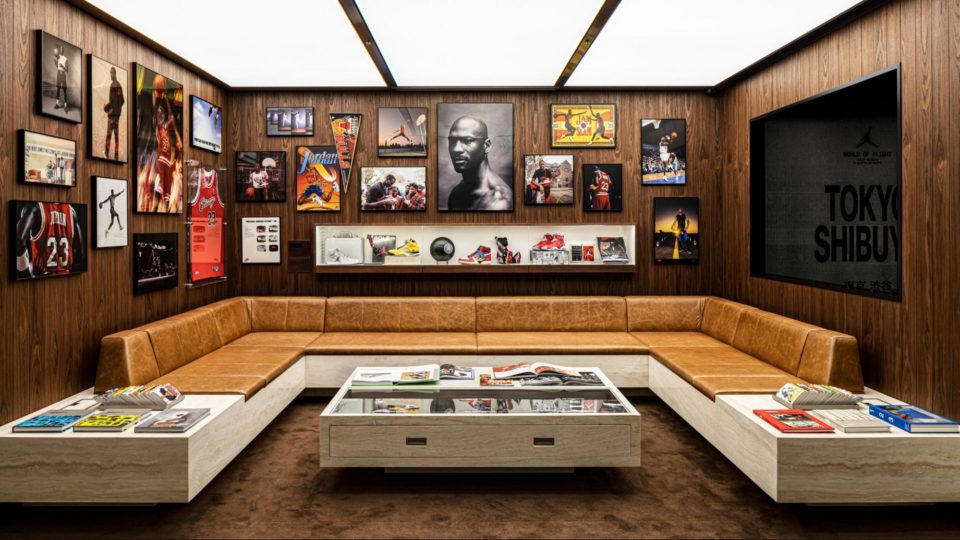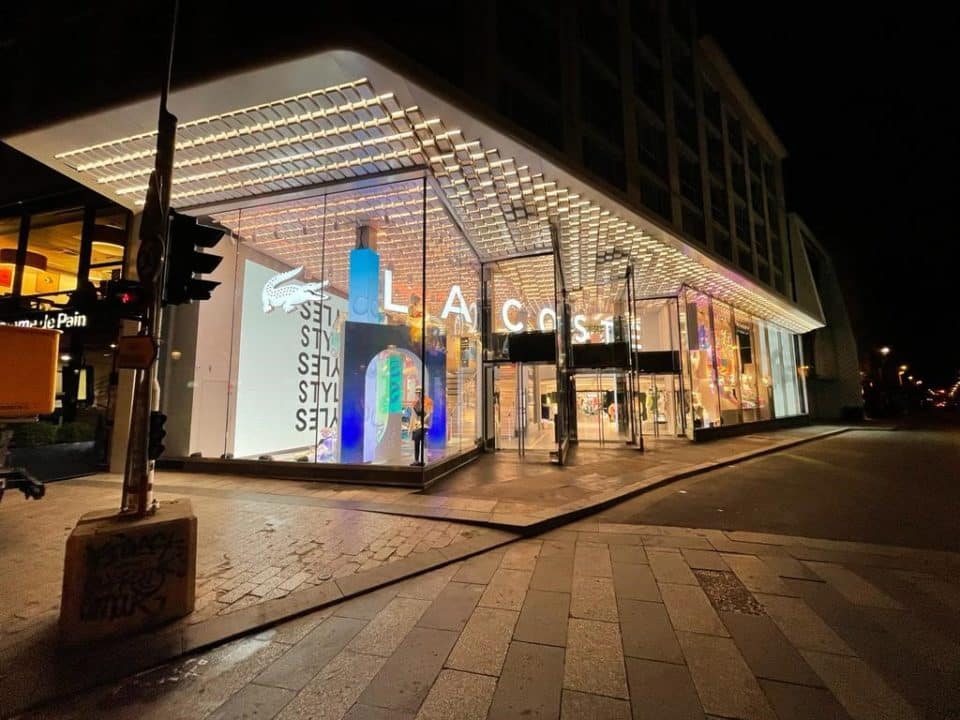Bridging the gap: how the Fashion Innovation Agency is bringing fashion and tech together
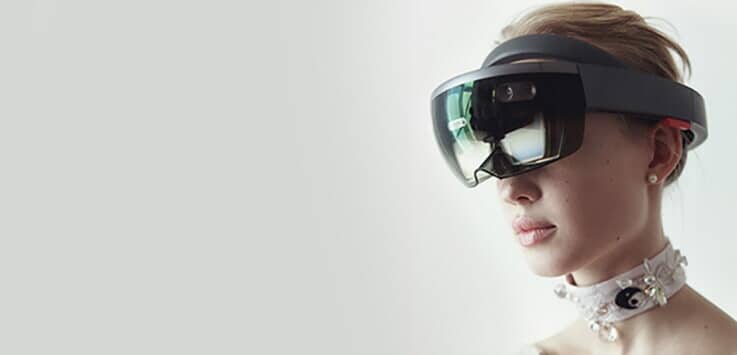
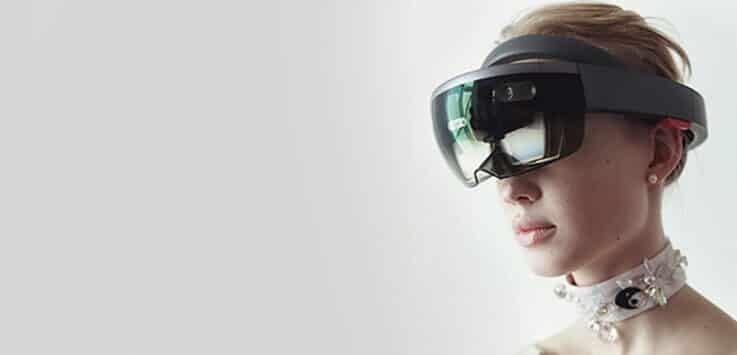
You really don’t need us to tell you that tech is changing the world. Or you shouldn’t. And yet the London College of Fashion’s Fashion Innovation Agency (FIA) is working every day to bridge the huge gap between the worlds of fashion and retail and tech. Because if retail got the tech memo it’s not acting on it as it should.
Exploring everything from wearables to augmented and virtual reality, FIA brings together the most exciting designer talent with the latest tech innovations to deliver ground-breaking projects. It is helping reinvent the way fashion is made, sold and shown. And it is doing some amazing stuff as a result.
Head of the FIA Matthew Drinkwater shares his surprisingly positive vision for the technologically-enabled future of retail and fashion – if retailers can take leadership of it.
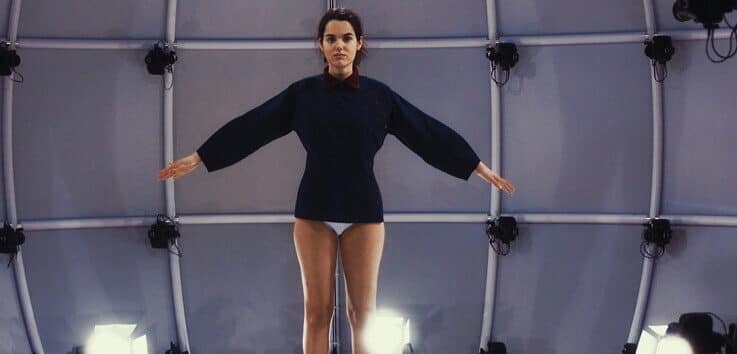
Can you explain what the Fashion Innovation Agency (FIA) does?
I head up the FIA at the London College of Fashion. Our team has a remit from the college to use emerging technologies to change the way that designers either make their collections, the way they show their collections and ultimately how they end up selling those collections.
That’s where we really branch into the retail space of what designers and brands are doing. It’s a look at how we can assess everything around the very traditional fashion designer retail model and use new technologies, like augmented, virtual and mixed reality, to create case studies that we show to the industry externally.
We also use those case studies internally at the college to lecture to the students so that we can send them out with a more well-rounded knowledge of what is out there. I think when we first started five years ago there was a realisation that the gap between traditional fashion and technology was absolutely enormous. Whilst it remains large, our work over the last five years has made a huge difference in beginning to narrow that gap a little bit.
The Centre for Fashion Enterprise (CFE) is our sister organisation and the world’s most established incubator for fashion designer businesses. They run various programmes of support for emerging designers.
[youtube https://www.youtube.com/watch?v=https://youtu.be/49Ykidyvx6E?rel=0&controls=0&showinfo=0&w=737&h=415]
Do you think there’s a huge amount of work left to be done in narrowing this gap?
There is a gap. I think there’s a lot for traditional retail to adapt and change to. The world is changing around those traditional businesses at a very fast pace and that resistance to embrace and experiment with new technologies is endemic amongst retailers. There is a huge amount of work to be done.
The fashion industry likes to put out a message of being an early adopter. I think it equally has a long way to go. Every element of that cycle from the way in which product is made, how it is showcased and ultimately retailed is going to change dramatically over the next five to ten years. For fashion itself I think that there is an awful lot of work to be done.
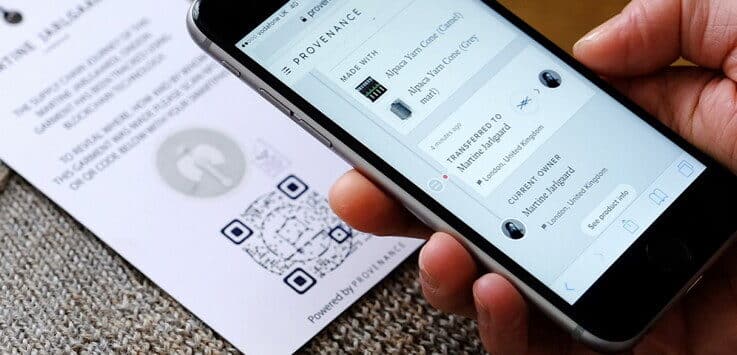
Who are the biggest brands that you work with?
We’ve done a lot of projects for some of the larger luxury brands and continue to engage with them and begin to advise them on best practice and new ways. If there’s one thing we can do is inspire that change.
We tend to do a lot more projects publicly with emerging designers. In some ways that work with younger emerging designer brands is incredibly satisfying simply because of their ability to work very quickly and be much more open to change. The structural problems that those larger organisations will face in embedding technology and innovation within what they do is those layers of management that really do need to change in the years ahead.
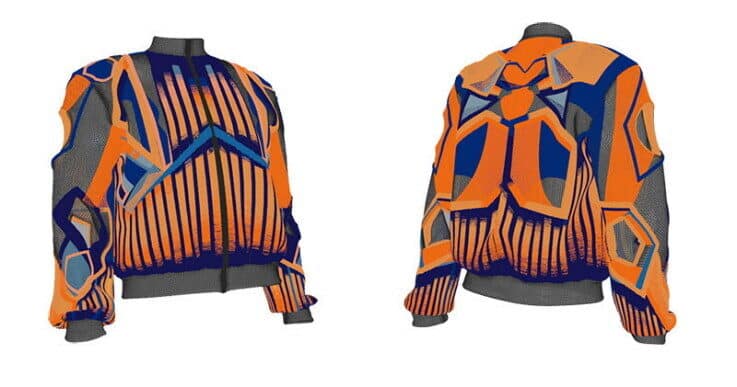
Why do you think there’s such a gap between these technologies being developed and them coming to retail?
When you see perhaps a large marketing push behind a particular technology your expectation is that that becomes normal. Even with the growth of augmented reality and virtual reality, there’s still a huge amount of work for that technology to do and a long pipeline for that to become embedded in everyday life in a way that people use it and interact with it.
Sometimes from a retail perspective there is an essence that someone will run a marketing campaign and say ‘yeah we’ve done augmented reality we don’t need to do it again’. One campaign of showing a holographic catwalk is not enough. Brands need to engage further and empower their teams to begin to experiment and find out a pathway for that technology.
I think that’s why at the college we have a much greater opportunity to begin to show the pathway for that. The use of augmented reality to showcase something like a virtual catwalk is kind of the end point of that pathway. We need to start encouraging brands to engage and create in 3D so that they’re looking at how that can be embedded into supply chain and what that might mean for prototyping and sampling.
[youtube https://www.youtube.com/watch?v=https://youtu.be/ECq9f5d298w?rel=0&controls=0&showinfo=0&w=737&h=415]
When you have that 3D asset where does that then live on a website? What impact might that have? How could you begin to use that within a retail environment? Then ultimately yes what kind of AR and VR experiences could you create further down the line? But there’s too much that is done at a very light marketing end which is just to push a brand as being forward-thinking rather than looking at how that process ultimately might drive a really structural change to the business over the longer term.
The technology can have enormous implications for the industry. But looking at one single example as being ‘AR’ is incredibly one-dimensional. One of the things that we talk about with the lack of adoption of technology is a lack of leadership within the industry, a lack of understanding of those technologies, a fear of those technologies and the implications they might have. Also, how that might have implications for legacy systems that may already exist.
All of those things together mean that there is such a slow uptake of what is coming through and a lack of experimentation with things that ultimately retailers have to be using. There are some really positive ways that they could be using it to make an impact now within the business. I think that’s where we have a crucial part to play to inspire and educate and to show the industry how it could play a part in everything that they do.

Are there any quick win technologies or processes that you would recommend?
When you look out across the vast landscape of emerging technologies there’s a lot retailers could be doing in almost every sector from supply chain through to buying decisions through to creation of product itself to engaging with consumers on the shop floor. There are technologies that could be deployed right now.
We did lots of projects in creating digital product and just having 3D content on websites saw clickthrough rates increase by anywhere between 20 and 40 percent. How many retailers have 3D content on their websites? There are a few, but not many. Which means how many are creating 3D content? Do they have the skill set embedded in their workforce to be able to do that? Some businesses do. But a great deal don’t. When buyers are making buying decisions are they able to look at 3D content to make a decision that they feel confident that that looks realistic enough?
A lot of our work has been focused on how to create photorealistic content and blur the lines between what people perceive as real and what is not. If we can get to that point, then from a consumer perspective there’s a lot of change that can happen. But also within the industry you begin to offer tools which would save a lot of time, a lot of money, allow brands to get product to shop floor a greater deal quicker. That’s without even touching on automation and where robotics might sift into supply chain. How we might be able to bring production much closer to retail and in some cases right inside the store itself. These are all processes that are out there and do need to be experimented with.
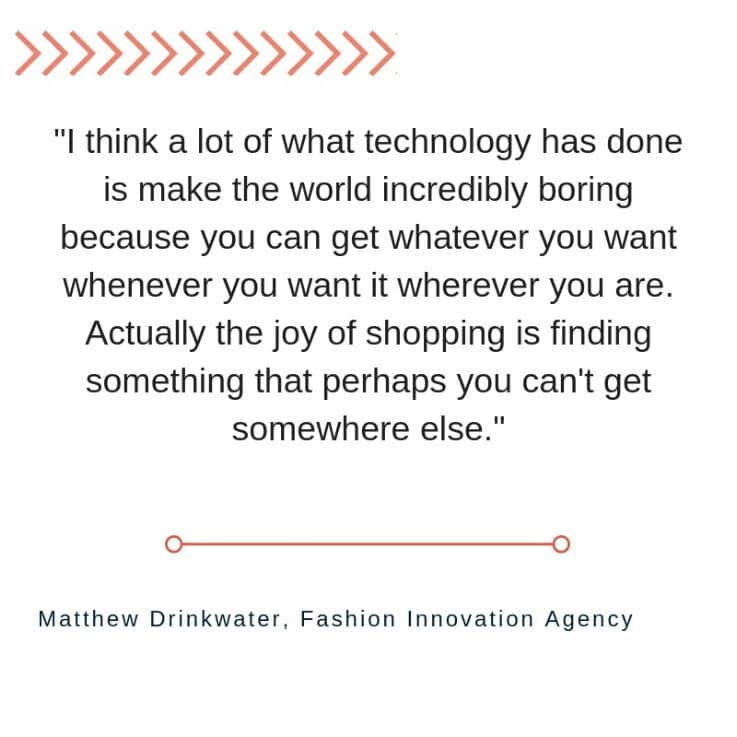
I think sometimes when you speak to retailers there is that assumption that it’s ready and you just put it into the store. It’s a long-term process, you have to work with it and then you’ll be in a place to act upon them when they are really consumer facing.
What I would say is it’s not looking at just the individual, it’s where is the leadership across that? Who has oversight and ownership over those technologies to begin to embed that? We always go back to the lack of leadership that we see across the industry. From a creation standpoint you could be starting to create in 3D – that could have massive implications on prototyping and supply chain. These are things that could be adopted immediately and then ultimately they’re going to end up with some kind of virtual experience at the end of it.
We’ve done a lot across wearable technologies and beginning to look at the pathway for that although that’s much longer term. We’ve experimented with blockchain. These are all things that in isolation shouldn’t be done just as a one-off. They need to be embedded into a much more holistic digital framework for businesses on how they might engage and innovate and disrupt the systems that they have across the business.
[youtube https://www.youtube.com/watch?v=https://youtu.be/DuBhy73uXyo?rel=0&controls=0&showinfo=0&w=737&h=415]
Can you tell us about some of the most exciting projects you’ve explored in the FIA recently?
The last three years or so have been largely focused around immersive technologies and we really have been able to demonstrate a pathway for 3D and the creation of virtual content. The implications for that are really wide. We started just as a very simple creation process looking at how we could create virtual content. That was either creating through computer graphics or using capture technologies like photogrammetry to scan content and create a 3D model from that. That pathway has allowed us to start to create photorealistic content, from scanning bags for Mulberry to recreating a bomber jacket this London Fashion Week for a designer called Sadie Clayton.
If you didn’t know that it was a virtual jacket it would be tough to tell. The images of the original when you sit them alongside the virtual content it’s very difficult to tell the difference. We did a project with Emma J Shipley a couple of years ago where you were able to virtually try on her luxury scarves. The idea that for designers you could create content in 3D before you physically have to manufacture it is quite empowering. For consumers the ability to really realistically try on product that doesn’t exist is quite exciting.
If we can get to a point where you can really realistically try something on virtually then that could begin to change return rates for retailers. It can have implications for the supply chain and how designers and brands actually bring that product to market. You can see the kind of money being pumped into hardware to allow us to consume 3D, augmented and mixed reality content by the likes of Magic Leap and Apple. The idea that we might be able to create virtual clothing for us wear in a mixed reality world – what kind of business opportunities does that create for designer businesses?

We did a huge project with a London based designer called Steven Tai and the Hollywood film studio called Lucasfilm back in February of this year where we were able to show how you could use visual effects to enhance performance. We created digital content so you could see a CGI avatar wearing CGI clothes and those clothes were able to morph from one to another. There is a future where digital content and visual effects could be created to enhance what you’re wearing in the real world.
You can almost map out that technology path. People are paying for virtual content on their mobile phones at the moment through mobile gaming such as in the ASOS and Sims collaboration, so there’s a very simple way that is happening at the moment. Look at how digital influencers have become such a big thing over the last year or so. People are interested in this digital world and how it interacts with the real world.
As that technology becomes better and better are we going to get to a point where it becomes really realistic for us to create content that is hyper realistic but is virtual? That pathway for the technology is not a fad, that is actually coming. We will have projects in the year ahead or so that allow us to accurately scan the body, begin to place virtual content onto scans of real human beings and try on virtual products in a way that is more realistic than ever. That really does have big implications for fashion retailers and the way they interact with consumers and how consumers will end up buying that product.

Do you think when we have access to this level of tech there will be as many stores as there are today?
What I think it will do is change the type of retailing. Amazon have been patenting a magic mirror where you can virtually try products on at home. I think you can see the path of technology where it is going to be possible to stand in front of your mirror to really realistically try clothing on and see the fit of it and how it looks and match up with product that you might have in your own home.
So what does that do for multiple stores who want to have the same experience everywhere? That becomes very quickly irrelevant. But what consumers have reacted to is going into a store to have an experience that you could never have at home. I think it forces retailers to begin to think about the types of experience they create within those environments.
One of the things that we did when we did the project with Lucasfilm and Steven Tai was create this augmented reality environment that changed over the course of the two hours. It was this location-based experience where you came to a specific location and because of the incredible visual effects and computing power that we were able to put into that location it created something that was really memorable. I think that kind of location-based experience is what retailers are going to have to work out. They’re going to have to offer something that feels unique and exciting to that particular area.
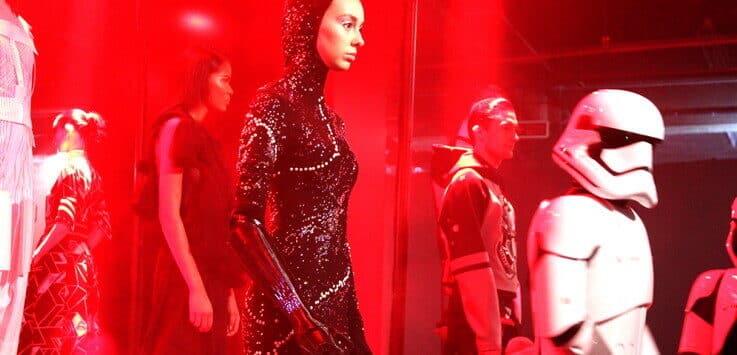
I think when we showcased that project you can see the implications for standalone retail to have that kind of immersive experience within a location that is just impossible to achieve somewhere else. I think when you see the progression of virtual reality and some of the larger successes it feels like when I was young and I used to go to the arcade to play video games that you couldn’t play at home. The advance of PlayStation and Xbox has made that kind of arcade game very normal, so I don’t need to go out to do that anymore. But now with these virtual reality experiences that are in a particular location that have computing power that you simply can’t achieve at home it’s driving people to them.
Westfield hosted one of the VOID’s Star Wars: Secrets of the Empire virtual reality experiences and I think 70 percent of the people that went to that experience had never been to Westfield. So you are driving a new type of customer through that experience into that retail environment and the opportunity that creates is fairly obvious. We can talk about the technology, but it’s your memory of having that experience in that location that will drive you back to it.
In a way for me that doesn’t sound so different to what retailing used to be like. Can we imagine a future where you have a lot more specialty stores where you’re going into locations where that type of product isn’t available everywhere else? That’s the kind of thing that I think you’ll see emerging in the future. You’ll obviously have brand experiences that cater to bigger spaces, but I think a more specialty focused future, a more intimate experience, perhaps even a location where staff might remember who you are, that feels like a more natural and a more exciting future for me than the same store available in every single high street.
I think a lot of what technology has done is make the world incredibly boring because you can get whatever you want whenever you want it wherever you are. Actually the joy of shopping is finding something that perhaps you can’t get somewhere else. That’s what retail needs to focus on in the future because that ubiquitous nature and the ability for Amazon to deliver us whatever we want within ten seconds via drone means that we need to focus on what is emotionally exciting and what feels really special. That type of retailing is what should exist now to be perfectly honest. That’s what retailers are missing because everything is boring and everything is the same.
[youtube https://www.youtube.com/watch?v=https://youtu.be/uZaz9VGW-uo?rel=0&controls=0&showinfo=0&w=737&h=415]
What are your thoughts on the possibility of creating products in stores with a model like Unmade?
They’re having big success in beginning to work with bigger brands and getting that into manufacturing process which then allows for a completely different consumer experience. But there needs to be more. You can see the impact that bespoke and customisation has on the way that consumers feel about products and the price that they’re prepared to pay for products. I think 3D printing was held up a while back as being perhaps the solution to that and I think it still has a long way to go to offer a viable in-store solution. There will be more of that over the next year or so. You’ll begin to see as robotics becomes more affordable both at the manufacturing and retail end, on-demand will become a much more realistic option for retailers in the next five to ten years.
But retailers shouldn’t be waiting five to ten years for that to happen. They need to start experimenting now to understand that process so that in five to ten years they’re not bypassed by somebody else who is a lot more nimble, who might not even have appeared on the market yet. If you look back ten years ago a lot of those big technology names didn’t exist. Now they’re beginning to have a retail presence. Retailers have an opportunity now to start engaging with technology companies and startups to begin to build what could be a new experience for the future.
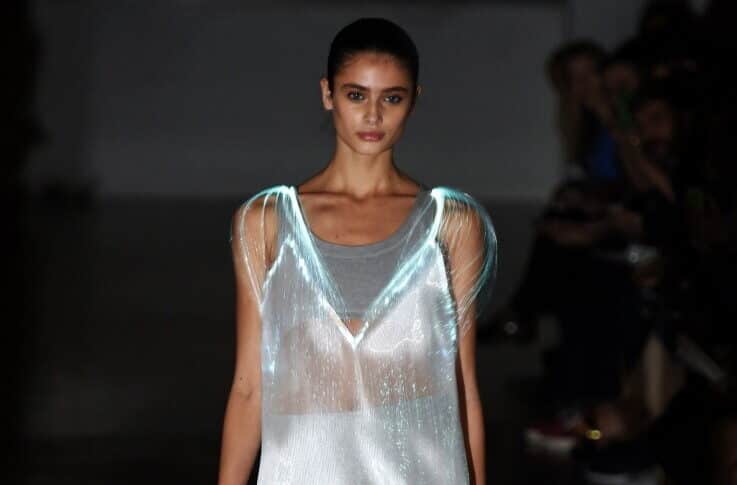
Do you have any thoughts on how wearable tech and retail will overlap?
I think wearable technology has that possibility to connect the world around you. We haven’t seen it to date because I think that promise of an IoT landscape where we’ve got a sensor-led environment all around us just hasn’t materialized. What wearables have struggled to do is go beyond what your mobile can do. I think a lot of those interesting advances in wearable technology sit largely within sportswear and medical. Even watching Apple’s latest watch it’s really pivoting towards health and they’ve been doing that for some time. The idea that your watch can give you an ECG is quite extraordinary.
Fashion has largely struggled to find a meaningful use case for that technology. I think probably the best example of wearables within fashion is Google’s Project Jacquard and yet there’s not yet that feeling of it being a must have. I think for us it’s a much longer-term thing. We need to be able to get circuitry down to yarn level.
There’s some amazing research being done in that field for us to be able to create the type of experience that feels like it adds something to a garment. We’re not at that stage. I think there’s a long way to go and lots of issues around battery power, washable electronics, scalability. Those are the things that are holding back wearable technology within fashion.
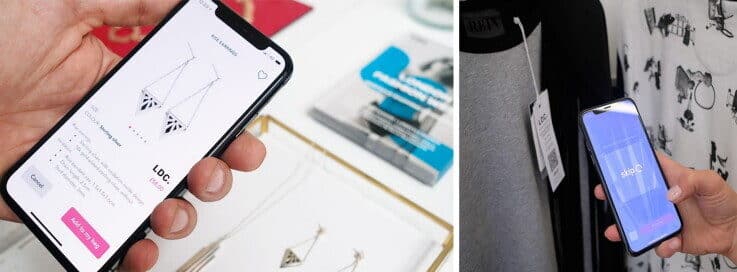
What do you think of Tommy Hilfiger’s XPLORE jeans project?
I’m always encouraged to see a retailer experiment, so I think first and foremost that’s great. I think what we’re still waiting for is something that consumers genuinely feel like is going to add some value to that experience. Rather than it being brand led, I think there needs to be a platform which goes much wider than that and feels like it’s adding to your everyday life.
There’s a really interesting promise to come to understanding what you wear, when you wear it, how often you wear it. Connecting your wardrobe to a digital assistant – that for me is where it becomes really interesting. For a digital assistant to know what’s in my wardrobe, know what’s in my calendar, being able to connect that and understand that I might have a very important meeting or what the weather might be like. Those sorts of things feel they like they have real value.
Whether you do that by embedding a sensor into everything that you own or whether at point of purchase you simply just need to scan that item into a digital assistant remains to be seen. There are a number of interesting solutions for that beginning to appear on the market. Then a wearable device could perhaps direct you when you were near a retailer. But again, augmented reality is offering a solution for that, guiding you through a store, showing you where something might be. Whether or not you need something embedded in your clothing for that I think is questionable.
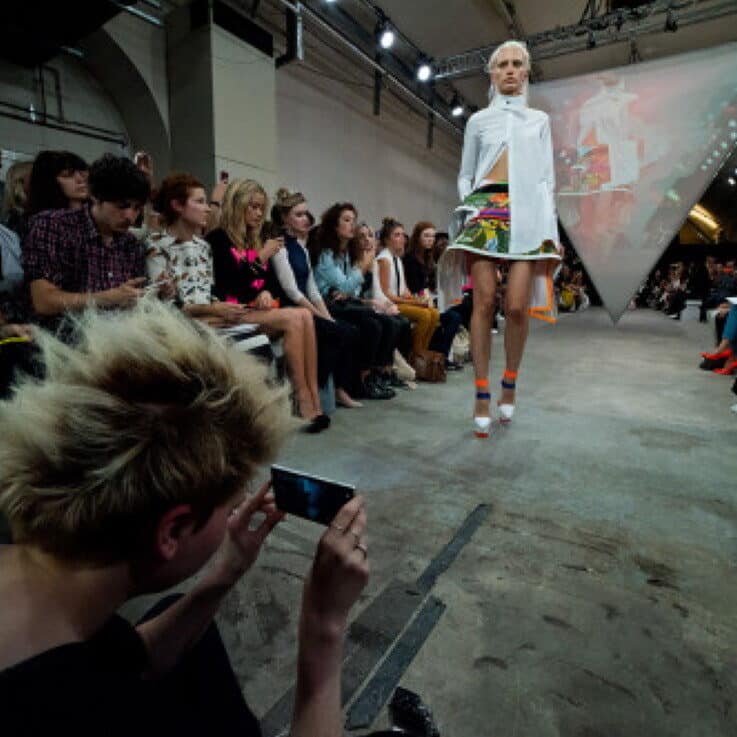
What will be happening in the fashion retail landscape in the UK in 2025?
I think you’ll see a lot of automation coming into the supply chain. This is going to allow for the idea of microfactories coming much closer to retail. That vision of a store with stock piled up high I want to see disappear. There will be the ability for consumers to come into store and begin to customise products that are made on-demand within an environment that feels exciting that could be enhanced through immersive technologies.
Above and beyond that, just the sense that each individual location is relevant to the area that it’s in, that has product that is distinct to another location, that gets us back to a sense of excitement about shopping, that the kind of products we create are valued more by consumers. Certainly, from a clothing perspective, if something is made bespoke for you that perhaps you’ve been scanned for so it fits perfectly – does that make you feel you value that product more? Through technology could we add some kind of experience to make the life of that particular product a little bit longer-lasting? All of that adds to a much more sustainable, much more fulfilling experience for consumers.
I would love to see us to shift away from that disposable mindset that too many consumers have. It would allow for brands to create meaningful exciting experiences every single day for consumers. I think in some ways that brands could be doing it now. One or two are but there’s just not enough of that. Too much of fashion retail and retail in general feels too predictable. That sense of unpredictability, that sense of discovery needs to return and technology can do that.
[youtube https://www.youtube.com/watch?v=https://youtu.be/2mkxiZ1Q9t4?rel=0&controls=0&showinfo=0&w=737&h=285]
How many sales do you think will be made without the customer visiting a store at all?
I think it will obviously increase dramatically from where it is now. But the exciting prospect is if you could create that experience that you can’t have a home could there be a renaissance for traditional bricks-and-mortar retail that it still maintains that balance of ‘I could try that on at home but I want to go to the store, I want to go out, I want to have that experience’. Look at how people flock to put things on Instagram – if you can find that level of excitement then we can maintain that balance and retail can have an amazing new future.

Do you think we’ll see a lot of change in the brands who will be around in 2025?
Completely. Both in a fashion sense and other sectors of the retail industry Amazon is considering opening 3,000 Go stores and that’s going to be a direct challenge to a lot of traditional retailers. I’ve spoken a lot about research and development budgets that sit with the big technology firms. Some of those R&D budgets will be bigger than the turnover of our largest retailers. If those retailers don’t think change is coming they’re in for a big surprise. What the high street looks like five to ten years from now I’m not sure, but it will be dramatically different.
Are there any lesser known companies who you’re really excited by?
I love the work of an amazing London-based startup called Snap Tech. They’re worth everybody looking at because I think they have a great team and are going to deliver some interesting solutions. Another UK-based company called Improbable are doing some amazing work in immersive technologies. There’s also a very young startup called Save Your Wardrobe. They’re beginning to explore the digital assistant space and could do something really exciting.
Images courtesy of Fashion Innovation Agency

